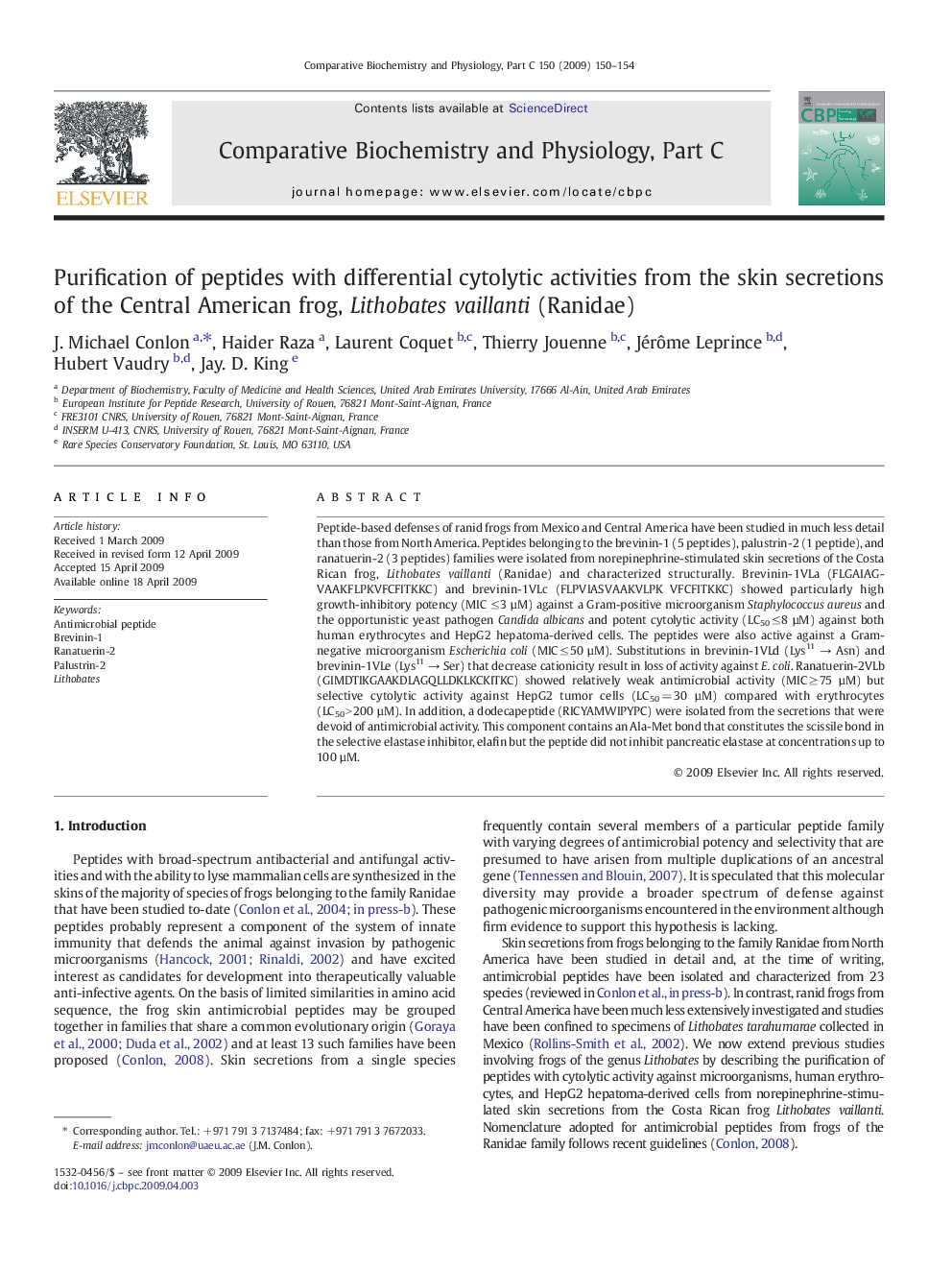| Article ID | Journal | Published Year | Pages | File Type |
|---|---|---|---|---|
| 1977875 | Comparative Biochemistry and Physiology Part C: Toxicology & Pharmacology | 2009 | 5 Pages |
Peptide-based defenses of ranid frogs from Mexico and Central America have been studied in much less detail than those from North America. Peptides belonging to the brevinin-1 (5 peptides), palustrin-2 (1 peptide), and ranatuerin-2 (3 peptides) families were isolated from norepinephrine-stimulated skin secretions of the Costa Rican frog, Lithobates vaillanti (Ranidae) and characterized structurally. Brevinin-1VLa (FLGAIAGVAAKFLPKVFCFITKKC) and brevinin-1VLc (FLPVIASVAAKVLPK VFCFITKKC) showed particularly high growth-inhibitory potency (MIC ≤ 3 µM) against a Gram-positive microorganism Staphylococcus aureus and the opportunistic yeast pathogen Candida albicans and potent cytolytic activity (LC50 ≤ 8 µM) against both human erythrocytes and HepG2 hepatoma-derived cells. The peptides were also active against a Gram-negative microorganism Escherichia coli (MIC ≤ 50 µM). Substitutions in brevinin-1VLd (Lys11 → Asn) and brevinin-1VLe (Lys11 → Ser) that decrease cationicity result in loss of activity against E. coli. Ranatuerin-2VLb (GIMDTIKGAAKDLAGQLLDKLKCKITKC) showed relatively weak antimicrobial activity (MIC ≥ 75 µM) but selective cytolytic activity against HepG2 tumor cells (LC50 = 30 µM) compared with erythrocytes (LC50 > 200 µM). In addition, a dodecapeptide (RICYAMWIPYPC) were isolated from the secretions that were devoid of antimicrobial activity. This component contains an Ala-Met bond that constitutes the scissile bond in the selective elastase inhibitor, elafin but the peptide did not inhibit pancreatic elastase at concentrations up to 100 µM.
